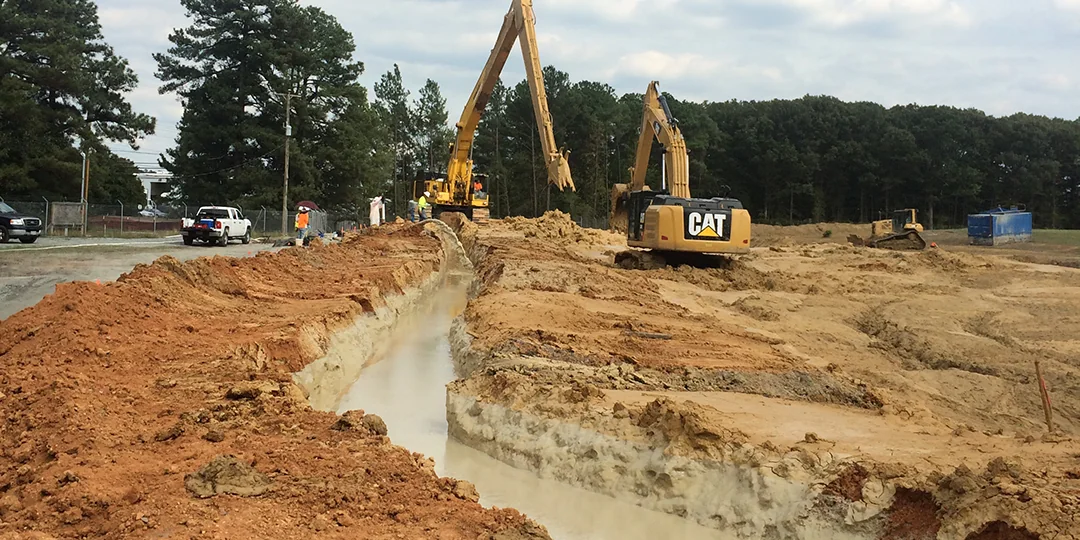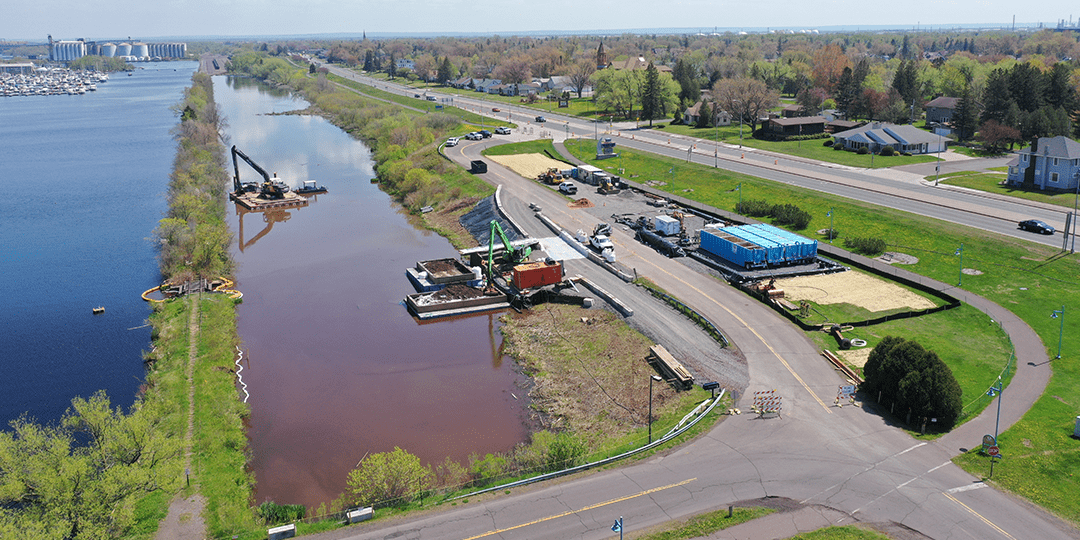RARE EARTH PROCESSING FACILITY RADIOLOGICAL DECOMMISSIONING
Industry: Manufacturing
Location: Gulf Coast
Innovative Remediation Strategies Achieves Client’s Goals and Cost Savings
ENTACT decommissioned, decontaminated, and demolished a former rare earth minerals processing plant in a larger chemical manufacturing complex.
The site was approved for closure by the USEPA in 2015. Modeling was used to determine remediation goals for allowable soil concentrations to meet the regulatory requirement, which resulted in soil concentrations equal to 3 pCi/g of thorium-232 and 9 pCi/g uranium-238.
Approximately 100,000 tons of radiologically impacted soil, sediment, construction debris, and 230,000 gallons of impacted water have been removed from the facility by rail, truck, and tanker. Waste from the facility has been disposed of at four different facilities across the continental U.S. based on its radiological contamination levels.
Work Performed
- A 1,500-sample characterization plan was conducted pre-excavation of the 13-acre site.
- Impacted structures, roadways, and paved surfaces were surveyed, demolished, and sorted for disposal based on radiological activity.
- A 1-acre, 5-million-gallon temporary fire water pond was constructed and lined with HDPE to supply the required fire protection, while the 2.5-acre Fire Water Pond was remediated.
- 4 wastewater processing ponds that contained NORM-impacted sediments were dewatered, characterized, and transported for disposal while keeping the ponds in service. Each of the ponds were reconstructed with new clay and synthetic liners.
- 3,500 linear feet of storm sewer were hydro-blasted with combination air-movers. Radiological gamma surveys were conducted in-situ upon completion.
- A 5,000-square-feet laboratory was demolished. Multiple chemicals and lab equipment were either recycled or transported for disposal.
- All areas are sampled after excavation, and an area-wide GPS gamma survey is collected for MARSSIM closure/final status survey. Sample logs and zone heat maps are produced for regulation reporting.
Providing Value to our Client
- Saved approximately $1M on disposal costs by using an in-state disposal facility instead of an out-of-state disposal facility.
- Gained concurrence with state agencies to allow lower activity material to be disposed of in local landfills for transportation cost savings.
- Material was analyzed in the onsite ISOCS lab for disposal characterization, saving on time and costs for analysis.
- Pond sediment was sampled in-situ for disposal profiling. The material was solidified onsite and loaded directly into 20-yard tractor-trailer dump trucks, saving on material storage, transportation, and disposal costs.
- Re-evaluated large open excavation methods into small grids with limited open durations. Tarps were used to control collecting and preventing rainwater from becoming impacted in excavations and in fluxing the groundwater during storm events. This limited cross-contamination saved approximately $4,800 per month on water disposal costs.
- Through detailed site characterization and negotiations with state regulators, a project variance allows a gradient scale for final material retention on site. This saved time and disposal costs for preventing impacted water and limited over-excavation in clean areas.
Sustainable Remediation
- Reduced transportation costs contributed to the reduction of carbon emissions.
- Recycled lab chemicals and equipment helped reduce disposal costs.
Project Milestones
Years on project
Safe man-hours worked
Let’s work together
We want to hear about your project. Learn how we
deliver results with innovation.


